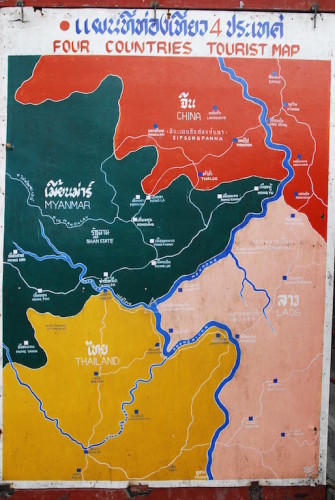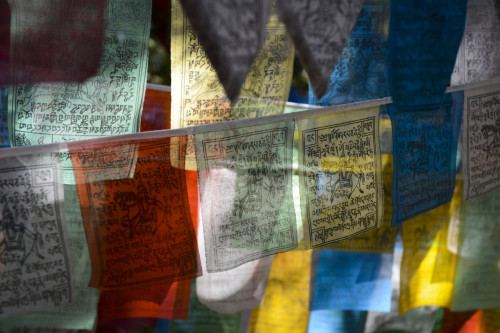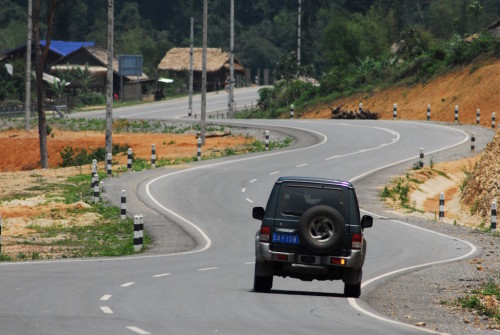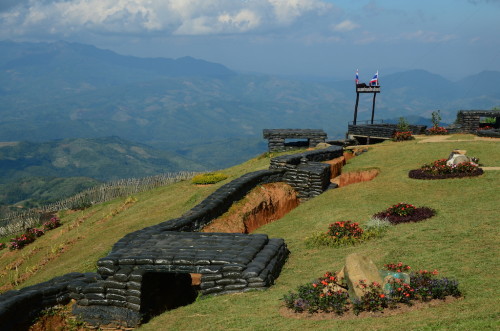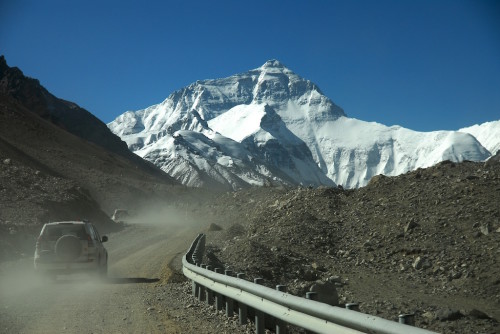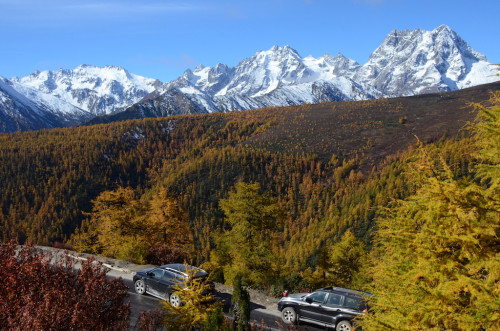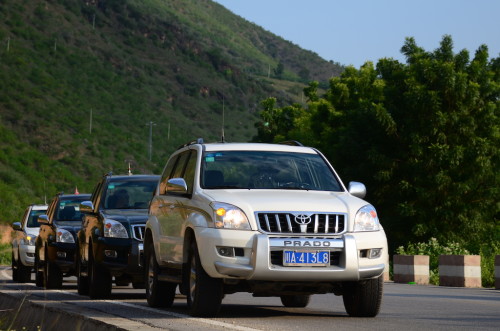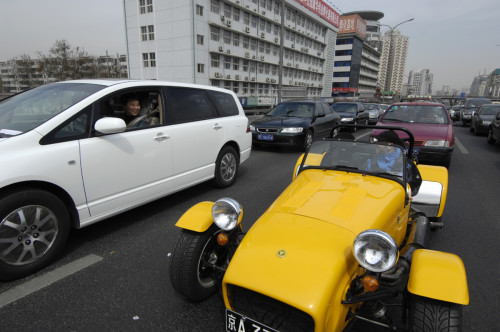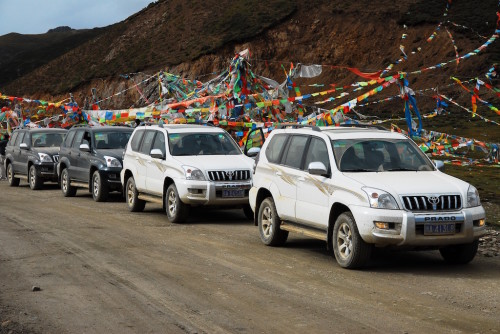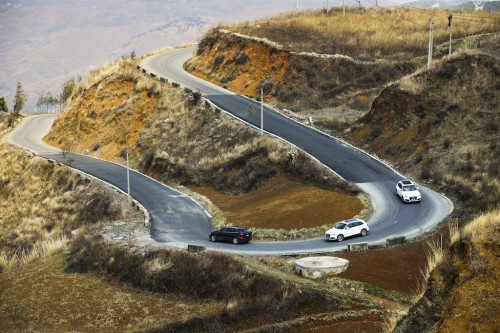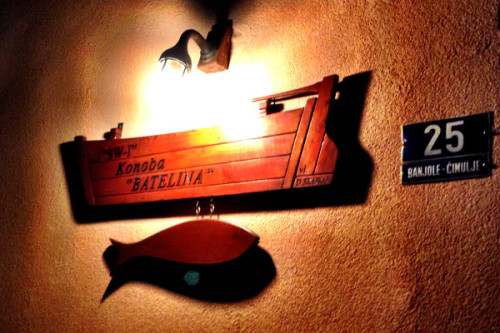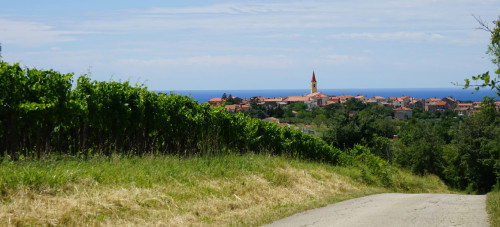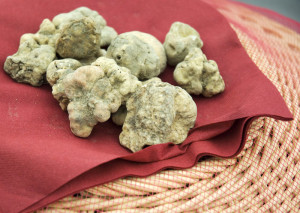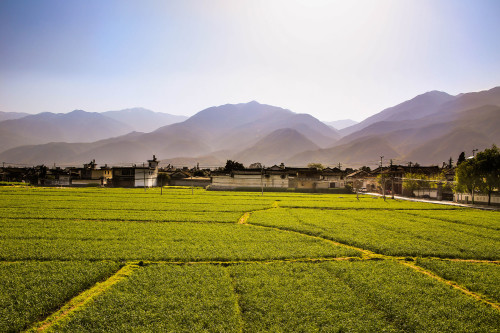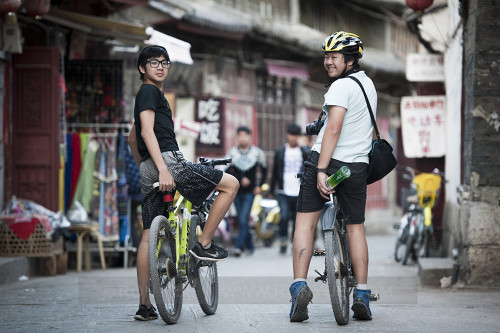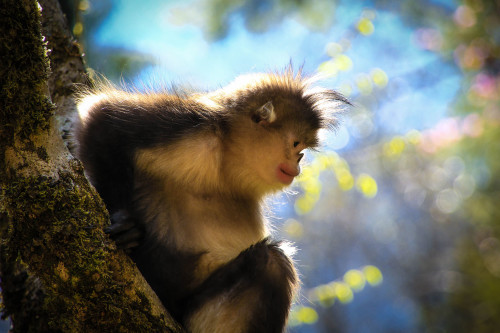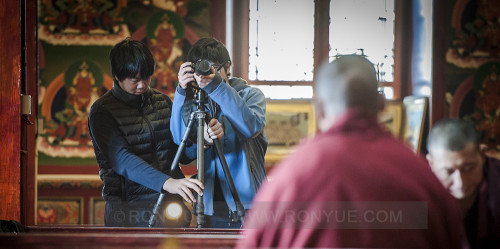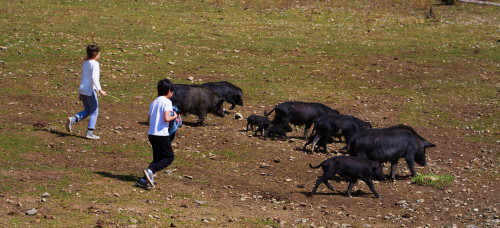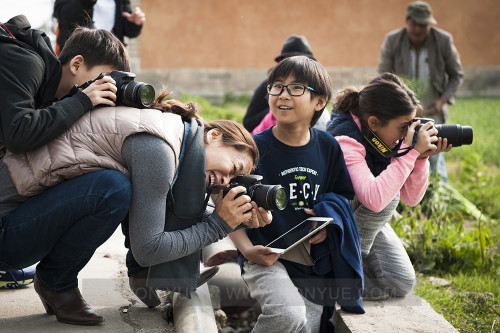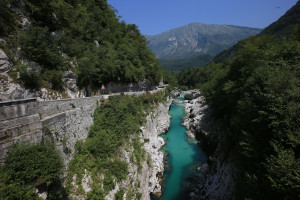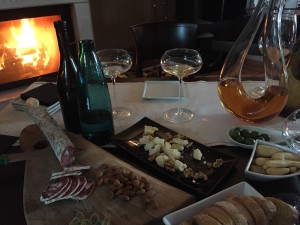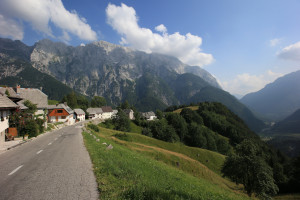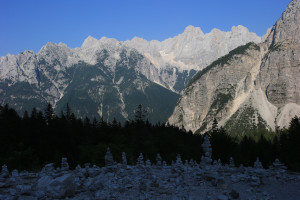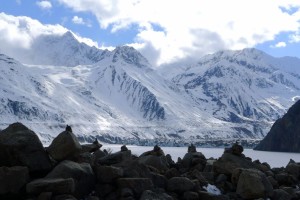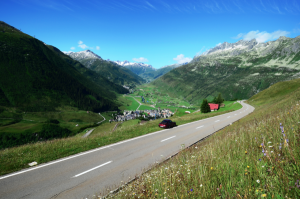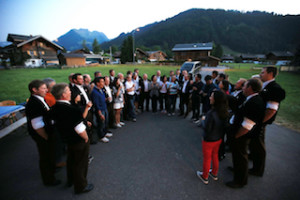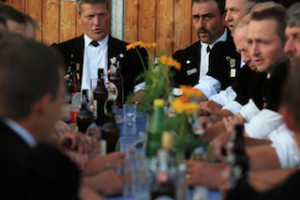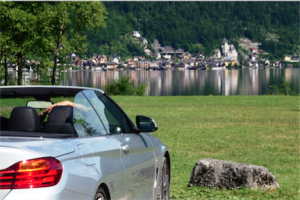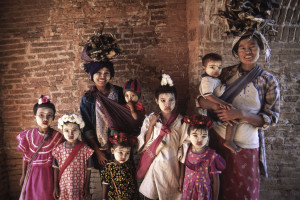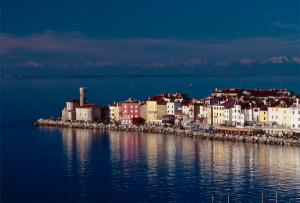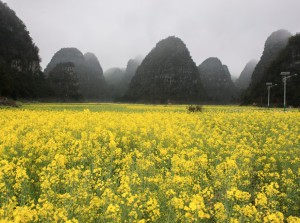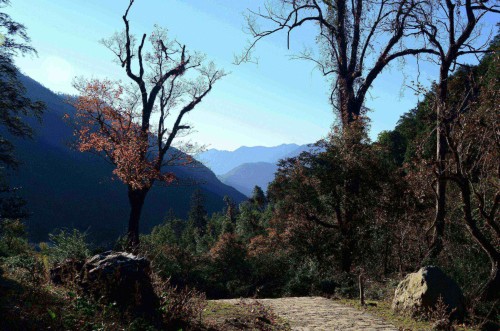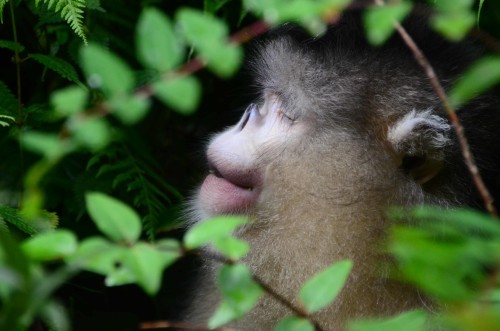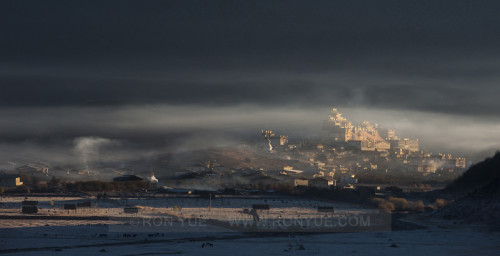Tag Archives: Driving holiday
Posted on 6 Jun, 2016
In October 2008, my wife Angie and I spent a few days in northern Thailand. While visiting this part of the Golden Triangle, we chanced upon a rusty map of the region. “Look,” I said to Angie, “two months ago I was here,” as I pointed to Xishuangbanna, the southernmost region of China’s Yunnan Province. (‘Xishuangbanna’, 西双版纳, is the sinicised version of the Thai word Sipsong Panna ( สิบสองปันนา) and means ‘twelve thousand rice fields’.)
“So close, eh?” Angie mused, “I wonder whether you could drive from there to here. Wouldn’t that be something?!”
“You’ve got to be kidding me,” I replied, “There’s borders to cross and who knows if there’s even a road.” Having only just managed to organise our first driving journeys in China, the idea of crossing borders seemed, to me, unfathomable. In those days, whenever an idea came up, my brain was inevitably troubled by the question of how to make it happen, and from that often flowed a stream of reasons why it couldn’t be done. Angie, by contrast, is seldom bothered by such details.
Later that day I reluctantly pursued the idea with her. Wouldn’t it be something to drive from the foothills of the Tibetan Plateau in northern Yunnan down through Laos and the Golden Triangle to Chiang Mai, and to see China merge into South-East Asia, turn by winding turn? It was a powerful idea, but “how?”
***
I grew up in another Golden Triangle of sorts, in Bregenz, a small town by the eastern shore of Lake Constance where Germany, Austria, and Switzerland meet. No opium poppies there, I can assure you: the only sources of inspiration are reflections in crystal-clear lakes and the herb-scented mountain air.
Shopping in Switzerland? Lunch in Germany? Dinner in Austria? All in one day? Easy! As I child I regarded driving across borders as an everyday occurrence, but since moving to Asia I have gained a newfound appreciation for the romance – and administrative complexities – that such overland journeys can inspire.
***
Fast forward to April 2009. Angie and I have just landed in Shangri-La. The sky is overcast and snowfall has dusted the hilltops. While eating breakfast we meet the hotel manager and tell her about the journey we are about to make. Her eyes light up, “If you enjoy driving, then you must take the back road to Lijiang – let me show you…” I finish my toast in one bite and drain my coffee cup while Angie knocks back a motion sickness pill. And then we’re on our way.
The main road from Zhongdian to Lijiang is shown on my map as a thick red line. The road that we take is shown as a single pencil-thin line, snaking between the two towns. The hotel manager was right – the road is incredibly beautiful, winding over high passes before descending to the Yangtze at Tiger Leaping Gorge, where the river roars through a deep gorge beneath looming cliffs.
After arriving in Lijiang that evening, we wander the cobbled streets, bemused at the sheer number of people visiting this UNESCO World Heritage Site. From Lijiang we drive south along excellent highways to Dali, on the shore of Lake Erhai, and then to Kunming and south again to Jinghong, the largest town in Xishuangbanna.
By the time we arrive in sleepy Jinghong, with its palm tree-lined streets and Thai-style temples, it’s clear that we are on the edge of South-East Asia. The region’s main ethnic minority, the Dai, are closely related to the Thais and in the countryside we drive past groups of sarong-clad Dai women with flowers in their hair.
From Jinghong we continue our drive on another wonderful road to the China–Laos border at Mohan, where we make a bit of history: Angie and I are, according to everyone we ask, the first Westerners to drive a China-registered rental car across this border. What I had taken for granted back in the “Golden Triangle” of my youth does, indeed, mean making history here…
In Laos, Route 3 connects the China-Laos border with Huay Sai on Laos’ border with Thailand, cutting south-west diagonally across the country. At that time, Route 3 had been recently rebuilt, and the modern road contrasted starkly with the villages it runs through, where villagers’ lives seem untouched by the twenty-first century.
Later the same day we arrive at Huay Sai and take a rickety looking car ferry to Chiang Khong on the Thai side of the border. After a long day – driving in three countries and over 400 kilometres – Angie and I treat ourselves to a stay at the lovely Anantara Golden Triangle resort.
The next morning, wholly refreshed, we drive back up to the map of the Golden Triangle, where Angie had had her idea six months previously. We look at the battered map in its rusty frame before turning and gazing out towards Burma and Laos, shaking our heads and agreeing “Now, that really was something…”
Never, ever let questions of “How?” stand in way of pursuing your ideas!
Since that first trip, we now have multiple crossing-border itineraries in Asia allowing you to step into our footsteps:
- Yunnan via Laos to Thailand
- From Shangri-La to the Lanna Kingdom is exactly the itinerary that Angie and I explored in 2009.
- From Yunnan to the Lanna Kingdom starts “further down” in Kunming, the capital of Yunnan, but includes the “Mirrors of God” Yuanyang rice terraces, a must-see once in your life.
- Yunnan via Laos to Vietnam – Our Summit to Sea itinerary takes you from one UNESCO World Heritage old town, Lijiang, in Yunnan to another, Hoi An, right by the South China Sea.
- Burma – Our From the Golden Triangle to the Bay of Bengal itinerary is a magical exploration of Burma, including out-of-the-way, hidden gems and well-known, must-see stops.
Posted on 16 May, 2016
Date of writing: May 2016
In many desirable driving holiday destinations (Switzerland, the US, Australia, New Zealand, Japan) renting a car is worry-free; everything from insurance to the quality of the cars is, more or less, guaranteed. China’s rental car market is, by comparison, still underdeveloped and there are many things to consider before renting a car. But as my essay “Be sure to return it empty” shows, things are improving…
In what follows, I summarise the current state of affairs from the point of view of an individual traveller interested in renting a car in the remoter regions of China.
Rental Car Companies – International car rental companies (for example, Avis and Hertz) have presence in China. There are also several local, large, and reputable companies such as 1Hai in the market. But you will also find thousands of operators who call themselves ‘car rental companies’ but usually hire out privately-owned cars. Beware of these: they may not have a car rental license. If you’re stopped by the police, you may face enquiries and delays. If you have an accident, the insurance company may refuse to pay up.
Choice of cars – The choice of cars is limited. Most large car companies focus on the mass market and provide only very basic cars. Renting a nice SUV or a sports car is, especially in remoter regions, very difficult if not impossible.
Insurance – Insurance coverage levels are, by international standards, low and it is difficult to know in advance how much the insurance company will pay under what circumstances. Certain insurance coverage common internationally is impossible to obtain in China. CDW (‘collision damage waiver’) coverage – whereby you as the renter pay a bit extra to lower the insurance excess – is an example. Overseas it is a matter of course that the car rental company will handle the claims processing on your behalf. Don’t count on this in China.
Driving License – In order to drive in China, you need a Chinese driving license. For overseas tourists, China offers a so-called ‘temporary driving license’. Car rental companies assume you have a valid Chinese license, permanent or temporary and will not assist you in applying for one.
Crossing Borders – In Europe, crossing borders with low-to-mid-range rental cars is in many cases possible, especially if one is willing to pay a top-up insurance. Very few European rental car companies allow you to take upmarket cars into the remoter regions of Europe. In China, none do.
Deposit – Depending on the location and the company, you may be asked to pay a security deposit in cash.
GPS & Maps – While China’s GPS navigation systems are improving rapidly, they do not incorporate real-time information about traffic conditions and road closures. If you travel in remote regions, you might drive hours only to discover that you have to turn around. Printed maps in Chinese language are good and easily available; English language maps are available, too, but not very detailed.
One-way rental – One-way rental services are common overseas, at least for common, popular cars: you can pick up a car in one location and drop it off in a different one (sometimes you have to pay extra, of course). In China, this service is still very rare.
As you can see, there are many obstacles that stand in a tourist’s way of renting cars in China. At On the Road Experiences we have removed all these hurdles. All you need to do is come and enjoy a fabulous driving journey in China or one of its neighbouring countries!
The first car I ever drove in China was one I owned. This was bug-eyed Miss Daisy (or 小黄 in Chinese). A Caterham Super 7 R300, she was the granddaughter of Colin Chapman’s Lotus 7, a car meant for the track that had somehow finagled a public road worthiness certificate. The R300 was sold as a kit you could assemble yourself; for less mechanically minded drivers, Caterham also sold a fully assembled version.
Getting this car into China and equipping it with a proper (no-funny-money) Beijing license plate took a year. When the customs official laid eyes on her at the port in Tianjin, he laughed, saying, “That’s not a car, that’s a toy!” (这不是个车,这是个玩具). It took six months to convince him otherwise.
Next came the ordeal of going through what in the UK is called “single vehicle approval”, that is, the procedure of registering an unusual car. (At the time there was only one Caterham in China, mine.) I was prepared to hear many official reasons why Miss Daisy might not be licensed, except for the one that I was given: that she did not meet the city’s emissions standards. Yes, Beijing, one of the world’s more polluted capitals, has stringent emissions standards in place. It took another six months for her to pass the test. (You can read about my journey through China with Miss Daisy here.)
As a result of this prolonged and stressful experience, I concluded that renting cars – even though they might not be as special as Miss Daisy – was the way to go.
And so when I had the opportunity to drive in Sichuan, my friends and I rented a car in Chengdu. Back in 2005, this was my first lesson in renting cars in China. I got myself in trouble on day one when I found myself being pulled out of some mud by a tractor. There are many reasons – including my own stupidity – why this happened, but the main reason, to my mind, was that the letters “4WD” were emblazoned on the rear door of the SUV. Surely a four-wheel drive could tackle a bit of mud? Perhaps, were it not for the fact that the “4WD” was an expression of the carmaker’s aspiration – mere decoration, rather than a statement of fact.
Not long after this I rented another SUV in Chengdu. I had arrived a day earlier to take care of some business, then the following day I picked up the car and raced to the airport to meet my wife. The car ground to a halt shortly after the tollbooth on Chengdu’s airport expressway. “What the hell?” I grumbled, “How on earth can I be out of petrol after less than 15km?”
After a kind gentleman helped me fetch a canister of petrol, I picked up my wife – who was fuming – and drove straight back to the rental car company to complain. The store manager looked at me as if I came from another planet. “You pick it up empty, and you return it empty, that’s how it works,” he explained. “Not where I come from! You pick it up full and return it full!” He looked at me with an expression that said “Well, you’re in China, not wherever it is that you come from…” and was about to move on from the incident when he decided that I needed an explanation. “We can’t do it like that, Sir. Actually, we tried. But it didn’t work. Many cars would be returned with the fuel gauge needle showing that the tank was ‘full’.” I smiled, thinking smugly, “See, it works!”, but he continued: “Yes, the tank was fuel, but what was in it wasn’t petrol!”
For our first few journeys with customers, we used “rental SUVs” we had procured for our guests. The trouble was, I later discovered, that the “rental SUVs” where, in fact, not rental cars, but private cars that the owners had made available to the “rental car company” to be let to customers. Luckily, we were never stopped by the police to check, and we didn’t have any accidents – the insurance would promptly have refused to pay, I was told.
How do you start a driving holiday business in an environment like this? In 2008 we decided that we needed good, properly licensed cars: it was the beginning of our good relationship with Avis China. We got what we wanted – new Toyota Prado 4.0ls, rental license and all. But there was one snag: we had to lease them for five years. This was good for our guests and good for our reputation, but bad for the company’s pocketbook as we didn’t have enough business to utilize these gems fully.
By 2013 Hertz (but sadly not Avis) began to purchase Toyota Highlanders for their short-term rental fleet in Kunming. We have been using these ever since, but now there is another snag: while overseas rental car fleets are frequently renewed (usually in less than six months, in some cases in as little as three), the Hertz Highlanders from two years ago are still in the fleet, and they show it. Everywhere in the world we humans has been equipped with a mental switch that flicks between two positions; “I own it, I care”, and “It’s a rental, for Christ’s sake, who cares?” In China the two switch positions – while gradually approaching each other – are still very far apart.
Last year, the boss of Avis China moved from Avis to DCH (大昌行) Motor Leasing, a subsidiary of one of China’s largest listed companies. He called us and said “I’ve got news for you!” As a result of his move and our long relationship with Avis, we’re now able to offer our clients the option to upgrade to brand new Audi Q5s. 一步一步 (“one step at a time”) things are getting better indeed!
Posted on 6 May, 2016
Batelina. The restaurant’s name came up three times in the span of three days while we were preparing for our research trip. A wine maker, an olive oil producer and a business school friend from Croatia, had all mentioned it in response to our enquiries about where we could enjoy the finest seafood in Istria. “Book well in advance”, I was told. A month before our trip, I dialled their number from Hong Kong. Greeted by a recording in Croatian, I decided to call back later. Which I did on the same day, the next day and quite a few more times. Never did I succeed in speaking to a person. “I can’t reach them,” I told one of the referrers. “They’re only open in the evenings,” he told me. Given that “in the evening” in Istria means midnight or later in Hong Kong, for me, a morning person, that wasn’t going to work out any time soon. I could have asked referrers to help, but they had helped enough already, so I didn’t want to bother them further. I decided to wait until I was in Europe. When eventually I called around 6pm Croatian time, I was greeted by a friendly voice, “How can I help you?” “I’d like to make a reservation,” I said, adding that there would be two of us on April 4th. “That’s a Monday night,” I tried to be helpful. “At night we sleep,” came the reply, “but in the evening we’re open. Would you like to book?”
While I still love printed maps, when it comes to finding a specific place, GPSs beat maps hands-down. When the GPS said “you’ve reached your destination”, we didn’t concur: finding ourselves on a residential street, we didn’t see anything that looked like a restaurant. We circled the “destination” once. With still nothing obvious in sight, we called Batelina and described what we saw around us. “Park your car on the lawn in front of you and walk around the hill to the house with the lights on…that’s us.” We did as we were told, trudging up the hill, still slightly doubtful that we were heading in the right direction until we spotted a sign leaving no doubt that we had arrived.
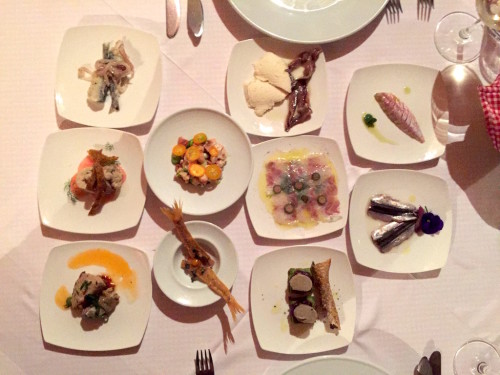 Since it was a chilly evening, we opted for a cozy-looking dining room with a fireplace. We were served by Ilya, who spoke excellent English. This came as a surprise – we had thought that we were coming to a very local restaurant – and almost put us off. Perhaps Batelina was no hidden gem after all, and that perhaps we were in for a meal of “tourist fare”. As became quickly apparent, this was an unnecessary worry: we had the finest seafood dinner of our lives.
Since it was a chilly evening, we opted for a cozy-looking dining room with a fireplace. We were served by Ilya, who spoke excellent English. This came as a surprise – we had thought that we were coming to a very local restaurant – and almost put us off. Perhaps Batelina was no hidden gem after all, and that perhaps we were in for a meal of “tourist fare”. As became quickly apparent, this was an unnecessary worry: we had the finest seafood dinner of our lives.
I believe that one’s enjoyment of any experience in life depends at least as much on the setting, the circumstance, and your expectations as it does on the raw nature of the subject itself. The subject in this case was, first, the recommended starter selection – on this day, ten small dishes featuring the day’s catch, each one a culinary jewel coming out of the treasure chest of the chef’s imagination. For our main dishes, we chose scallops and clams. For desert, we picked mascarpone cream with wine-cooked figs and homemade biscuits.
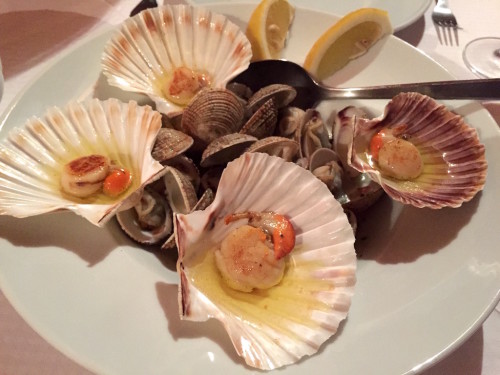 What made this evening such an utter delight? Was it that every bite enchanted our palates? Yes, indeed. Was it the complete absence of pretension? Was it that there was no Michelin, no Gault Millau, no Falstaff, no accreditation whatsoever in sight? Was it the story of Danilo, the fisherman owner of Batelina, and David his motorcycle-loving son and the current chef who joined us after dinner for a chat? I don’t know except that this evening has engraved itself forever in my memory.
What made this evening such an utter delight? Was it that every bite enchanted our palates? Yes, indeed. Was it the complete absence of pretension? Was it that there was no Michelin, no Gault Millau, no Falstaff, no accreditation whatsoever in sight? Was it the story of Danilo, the fisherman owner of Batelina, and David his motorcycle-loving son and the current chef who joined us after dinner for a chat? I don’t know except that this evening has engraved itself forever in my memory.
“How do you find a place like this?” I’m often asked. In our world of search engines, there is a belief that “you can find anything on the internet”. By now, I assume you will have googled “Batelina” and, voila!, there it is, you found it and with that “About 46,700 results (0.73 seconds)”. But Donald Rumsfeld comes to mind:
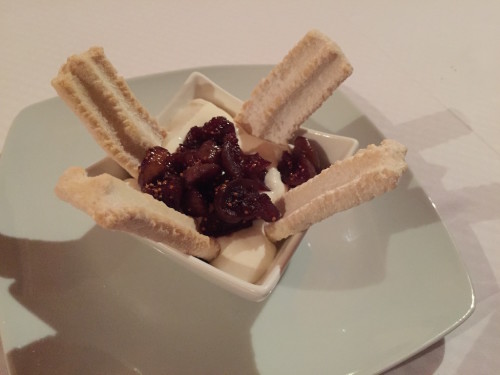 “There are known knowns. These are things we know that we know. There are known unknowns. That is to say, there are things that we know we don’t know. But there are also unknown unknowns. There are things we don’t know we don’t know.”
“There are known knowns. These are things we know that we know. There are known unknowns. That is to say, there are things that we know we don’t know. But there are also unknown unknowns. There are things we don’t know we don’t know.”
The magic of travel is that of turning some of the world’s unknowns – whether known or unknown – into knowns, the process of discovery that begins with a hunch, stops along the way at points of reference, and ends with an experience you’re dying to share. It’s that feeling of wonder about what “lies around the corner.” The hunch gives you the feeling that there is something out there waiting to be discovered. The points of reference, otherwise known as “friends”, are lighthouses that guide you along. And the discovery ends with your personal experience, which is when you know whether your hunch was right, whether your friends know you well. Sometimes, the answer is no and you move on. At other times – at times like Batelina – the answer is a resounding yes and you linger to tell the story.
Come and visit Istria while I feel it to be true that “rarely have so few known so little about a place that offers so much.”
P.S. My research was for a new On the Road Experiences itinerary: “Austrian-Hungarian Lands: A driving holiday (Part I)” that will wind through the Czech Republic, Austria, Slovenia and Croatia. E-mail me ([email protected]) if you’d like to be among the first to hear more about our newest European journey.
Posted on 29 Apr, 2016
Something seemed different here. The previous evening, we had crossed the border from Slovenia into the Croatian region of Istria, a triangular peninsula that points south into the Adriatic. After driving south for a little while, Angie and I stopped at San Rocco, a small hotel in the small town of Brtonigla in the triangle’s northwest corner.
A friendly receptionist greeted us and helped us check in. The receptionist turned porter and helped us carry our bags to the room. Then, when we came down for dinner, the porter had become our waiter, expertly explaining all the dishes and, to Angie’s delight, how each of them was made. He went on to recommend superbly matched glasses of wine for each course. When Angie observed that had she rarely met a waiter who knew so much about the dishes he served, we discovered that, in fact, our receptionist-porter-waiter, Teo, was also the chef. And, as it turned out the next morning, he is also the third in a story of four generations.
Over the years, I’ve lived in quite a few different countries: Austria, France, America, Japan, and China. Living in each meant, of course, moving from place to place. There is, as we learned after breakfast, another way of living in different countries. Teo’s grandfather was born in the same house in Brtonigla, then part of Austria-Hungary. By the time Teo’s father was born, Brtonigla had “moved” to become Italian in the inter-war years. Teo was born in the same place, which was then part of Yugoslavia. His son, net yet a teenager today, came into this world when Brtonigla had become part of Croatia.
With the family’s youngest generation playing in the dirt of a shallow pit that is destined to become the hotel’s new swimming pool, as we sat and talked with Teo and his father, Tullio, two things became evident: one, clearly stated, was that the family is more optimistic about the future than they can remember; the other, not stated but felt, was that they were filled with tremendous pride in their homeland, and in particular the produce that springs from Istria’s fertile land and surrounding sea, and the traditions that turn the harvest into culinary treasures.
The sea provides excellent langoustines, oysters and fresh fish; while the land offers asparagus, truffles, olive oil, wine, and ham – all of which are the pride of Istria’s inhabitants. This strong feeling of pride is tinged with a sense of injustice. Talk to Istrian truffle hunters and they will tell you, without any hesitation, that their truffles are at least as good as the ones from Alba: “In fact, some Piedmontese truffle merchants come to Buzet to buy our white truffles!” Talk to an olive oil producer – in our case, the producer of one of the world’s best olive oils, as ranked by expert Marco Oreggia – and he will say that in Roman times the best olive trees were moved within the Roman Empire from today’s Istria to Italy. Everyone seem to be saying that little Istria has battled for centuries against overwhelming odds to put itself on the culinary map.
But put itself on the map it will. In preparation for the trip, I read a charming article, entitled “Istria is not the new Tuscany”. It seemed to suggest that Istrians needn’t look to Italy to learn how to attract visitors and that their culinary heritage is worthy of recognition on its own terms. However I disagreed with the author’s conclusion that “No, Istria is not the new Tuscany.” Instead I feel that it’s more like the old Tuscany, devoid of crowds and brand names and redolent of “how things used to be”. Not to mention – though this is a story for another time – the peninsula’s traffic-free roads and back roads are a pure joy to drive…
P.S. My research was for a new On the Road Experiences itinerary: “Austrian-Hungarian Lands: A driving holiday (Part I)” that will wind through the Czech Republic, Austria, Slovenia and Croatia. E-mail me ([email protected]) if you’d like to be among the first to hear more about our newest European journey.
Posted on 15 Apr, 2016
When we first came up with the idea behind “Adventures in Yunnan”, we weren’t sure how it would be received. We had a hunch that a family driving holiday in Yunnan could be great fun, but would anyone be adventurous enough to join us with their kids?
We put together a 10-day family-friendly journey that ran from Kunming to Lijiang in short chunks with plenty of interesting stops along as many quiet back roads as possible, and began to spread the word. Four daring families signed up for the first trip and off we went. The question now was how long would it take before the cry of “Are we nearly there yet?” was heard?
After leaving Kunming, our first stop was at Yunnan’s Dinosaur Valley, the site of a “dinosaur graveyard” where palaeontologists have unearthed hundreds of complete dinosaur skeletons since excavation began in the 1930s. Armies of reconstructed dinosaurs seem to march across the main hall, while scientists work away below, discovering yet more ancient bones. Exciting enough in its own right, when coupled with the small theme park that surrounds the museum, we had a hard time persuading anyone to leave – even with the promise of lunch ahead.
That first day’s drive ended in Xizhou, home of the Linden Centre, one of our favourite hotels in the region, and – it turns out – a great place for families with children. The second morning saw us walking through the rice fields and into the village to see the daily market, where our guests practised their Mandarin as we stocked up on Xizhou baba, a delicious local snack of fried dough smeared with rose jam. The region around Xizhou and Dali has plenty of other activities on offer, and that first trip saw us riding a cable-car up into the Cangshan Mountains to visit a Taoist temple, cycling down quiet village lanes and eating cream cakes in a German-run bakery – making it well worth the two nights we spent there.
From Xizhou we drove on to Shaxi, a small village packed with well-preserved examples of traditional Bai architecture. Our group walked out into the cornfields, picnicked and happily poked about the village streets – really a world away from the choked city streets of Beijing or Shanghai that often spring to mind when thinking about travel in China.
On leaving sleepy Shaxi, we drove up the Yangtze Valley to the tiny hamlet of Tacheng. The upper reaches of the Yangtze Valley (where the river is known in Chinese as the Jinshajiang, or “River of Golden Sand”) are wonderfully scenic, with thickly forested slopes dropping away to the sandy riverbanks. Tacheng lies at the edge of the Baimashan Nature Reserve in an area famed for its biodiversity. We made time here to drive up into the reserve to spy on its most adorable residents – troops of Yunnanese snub-nosed monkeys munching on the moss that festoons the reserve’s ancient trees.
Beyond Tacheng it was a steep climb to the Tibetan region around Shangri-La, where we petted yaks and visited a Tibetan family in their home. There, our guests had the opportunity to try tsampa, a dish of ground roast barley mixed to a paste with tea and butter. Younger members of the group announced it was “just like Play-doh” and spent a happy half hour moulding it into animal shapes, before heading off for a more spiritual stop at the huge Ganden Sumtseling Monastery.
Our last few nights were spent in the bustling city of Lijiang. One of Yunnan’s most popular destinations, this town lies in a beautiful valley dotted with pretty villages and headed at its northern end with the 5,600 metre-tall (18,360 feet) Jade Dragon Snow Mountain. Between horseback riding and watching a fantastic open-air show in the mountain’s shadow, trying to find our way through the labyrinthine old town and playing in the hotel pool, before we knew it the trip was over and we were on our way to the airport to fly home.
Did anyone – parents or children – ever ask if we were nearly there yet? No, not to my memory! As a host, this itinerary really was one of my favourites. Our younger guests revelled in being taken out of their everyday environment and exposed to so many new and interesting things. Every day my colleagues and I were asked a slew of new questions, every day we staff saw something afresh through the children’s eyes, or had our attention drawn to something we hadn’t noticed previously.
“Adventures in Yunnan” has gone on to become one of our most popular itineraries, with multiple departures each year timed to coincide with the school holidays. Recently we’ve added a photography-themed version of the journey, where our photographer Ron coaches guests through a fun series of travel photography field workshops.
One of the fathers from that first trip later told me, “Because your team took care of everything, we were encouraged to do something more daring than we would have attempted on our own, but now we’ve been inspired…” Since then they’ve been travelling all over Asia as a family – be warned, adventures as a family can become addictive!
Our family-oriented journeys include:
“Adventures in Yunnan“
“Family Adventures: Travel Photography in Yunnan” (with Ron Yue)
Posted on 26 Jan, 2016
This Easter, we will return to Slovenia for the second time in as many years. Yet until 2015, I’d hardly heard the country’s name, despite growing up in neighbouring Austria. Suddenly, Slovenian connections seem to be emerging all over the place.
|
When I was growing up in Austria in the 60s and 70s, Slovenia was part of Tito’s Yugoslavia and lay behind the Iron Curtain. In my imagination, anything connected to the USSR was rendered in monochrome – inaccessible, undesirable, and forbidden. Why would anyone want to go there? I never had cause to reconsider this attitude until about a year ago, when my wife, Angie, and I began planning a trip to Croatia. Angie, who is originally from Malaysia, mentioned this casually to her sister Denise when visiting her last year in Melbourne. “You’re going where?!” exclaimed her sister. “Croatia’s right next to Slovenia. My best friend is from there.” Thirty minutes later Denise’s friend Renate had joined us to tell Angie all about Slovenia. |
A few facts about Slovenia…
Slovenia is a small central European country with a population of just two million. Part of the Austro-Hungarian Empire until it became independent at the end of World War I, Slovenia shares Austria’s mountainous geography. Since joining the EU in 2004, Slovenia has become a moderately well-to-do and modern country, yet has retained a rustic and unspoiled charm. Slovenia produces wonderful wines (mostly whites but also reds) and has endeared itself to us for family restaurants that serve hearty food “like grandma used to make”.
Several of our On the Road in Europe itineraries visit Slovenia (for example, this itinerary here). In 2017 we will be launching an Eastern Europe itinerary that will include the Czech Republic, eastern Austria, Slovenia, Croatia and Northern Italy. |
“If you do go to Slovenia, I’ll introduce you to my cousin Sanja. You can stay with her!” Just three months later Angie and I met Sanja and her husband Davorin. The couple live and work in Slovenia’s largest national park which takes its name from the country’s tallest mountain, Triglav. Sanja works in a drugstore; Davorin’s work is connected to the national park authority. They have three sons who could be the envy of any parent: courteous and lively, they come home from school to work on the family farm without their parents’ prompting. Much of what the family eats comes from their own land.
After Angie’s meeting with Renate, our trip to Croatia expanded to take in Slovenia as well. While researching our itinerary we thought it
would be nice to stop at some vineyards along the way. A friend recommended Movia, one of Slovenia’s finest winemakers. The vineyard’s owner, Ales, is one of a kind, we heard. Wouldn’t it be something to meet him?
When we plan our holidays, Angie researches the hotels and restaurants; I pick the roads in between. On February 10th last year, we pulled up in front of one of Angie’s selected restaurants, Danilu, on the outskirts of Ljubljana and a member of Jeunes Restaurateur d’Europe. We were served by a fizzy young lady who turned out to be the owner’s daughter. Besides helping out in the family restaurant, she runs a night club and, to our great surprise, counts Movia’s owner Ales among her close friends. A week later we met Ales, shaking his enormous farmer’s hands, and spent an entire afternoon tasting his beautiful wines in his firelit tasting room.
Sinuous roads lead through the Triglavsky park – one, narrow and steep, leads across a tall pass from Kranjska Gora to Soca; another enters from Italy. Less winding, the latter meanders across a lower pass and traces the course of a beautiful river. I could drive on these roads for hours without getting bored: how could one when immersed in this lovely landscape and dreamily following the curvy tarmacked ribbon of road?
We were driving through Triglavsky National Park earlier this year when I suddenly noticed something I hadn’t seen for a while. It was one of those double-take moments: did I just see what I saw? I turned around and back-tracked and then stood in front of, well, was I still in Slovenia? Or had I been transported to Tibet? Right there, in front of me, there were little cairns of stones that I had last seen along the road to Mt. Everest: sacred piles of stones that are constructed to fend off evil and bring good fortune. How had they been transported to Slovenia?
I find myself pondering how it can be that I had to go from Austria to Tibet and then via Malaysia and Australia only to discover Austria’s neighbor Slovenia and its unfathomable connections to places impossibly remote from it.
Sometimes it’s the things planned well in advance that make a journey special, like Angie’s restaurant choices or a particular route I’ve chosen, but at other times it’s the magic of serendipity – a chance collision of people and places – that transforms a journey into a really exceptional experience.
Posted on 18 Dec, 2015
Welcome to our quarterly update, a whirlwind summary of what we’ve been up to in the past few months and what is to come in 2016 besides the smell of ginger bread cookies my wife will be baking in our kitchen this weekend.
Looking back…
The second half of 2015 stands out because we saw, at last, our first journeys in Europe. Given that “On the Road in the Europe” has been gestating for 15 years, it is with a great sense of pride that we can finally introduce our first itineraries in the Europe – to watch a beautiful video of our journeys in the Alps, click here.
I have two memories from our European journeys this autumn that I would like to share with you.
First, in Gstaad, a small Swiss town, we had arranged the surprise appearance of a Jodl (or Yodel) Choir to entertain our group while they dined on fondue one night. As the Swiss singers yodeled, they coaxed our guests to join their song.
Though initially shy, one of our Hong Kong guests suddenly seized the initiative and launched into a rendition of Teresa Teng’s classic, “The Moon Represents My Heart” (月亮代表我的心) for the Swiss yodelers, with the remainder of our guests swiftly joining him for the chorus. Despite their lack of a common language (the yodelers speaking a Swiss dialect that I found difficult to understand myself), the two groups sang to each other with moving warmth, and toasted each other with infectious enthusiasm.
On our second foray into Europe, I was immensely pleased when our guests all selected open-top cars, perhaps following my advice that, for our European journeys, you “can drive any car you like, so long as it is a cabriolet!” Even on the trip’s rare grey mornings, our small convoy would roll away from the last night’s hotel, each car with its top down. When we pulled into the next hotel’s driveway that evening, the tops would still be rolled back, having remained that way throughout the drive. It was wonderful to see so much enthusiasm for driving in the crisp, fragrant mountain air of the Alps. 一百分!100 points to all of the participants!
In the second half of 2015, our team grew with Peifen, Liu (劉佩芬) and Kayin, Chau (周珈妍) joining us.
Peifen is based in Taiwan. She brings a breath of fresh air into the development of our business there, and in a very short period of time she has turned many customers into fans of hers and On the Road.

Kayin
Kayin has joined our Hong Kong team and now takes care of “Operations” – all the things that need to happen before a group of guests can hit the road; reserving hotel rooms, renting cars, booking flights and a million other details. This role was formerly filled by Cathy Choi, who is now focusing on marketing our journeys in Hong Kong.
Looking forward…
We’re in the midst of developing two new journeys, one in Asia, and one in Europe:
2016 will see the launch of On the Road in Burma, if I can call it this. We have long wanted to offer driving journeys in this remarkable country, and in January and February we will complete our ground research so that we can – fingers crossed! – begin taking bookings for our first journeys there in November 2016. Stay tuned!
In March, we will continue our research for a new set of European itineraries in the former Austro-Hungarian Empire, with the focus on the Czech Republic, Slovenia and Croatia. Our initial research has been incredibly exciting and we can’t wait to share the gems of cultural and scenic beauty that we’re discovering in this region!
This look ahead wouldn’t be complete without a brief mention of our upcoming journeys:
Our all new photography journey in Yunnan takes in three of the province’s most photogenic places: the striking fields of red earth around Dongchuan, the golden sea of rapeseed flowers that surrounds Luoping’s otherworldly karst scenery, and the “Mirrors of God” paddy fields outside Yuanyang. The journey starts on March 4th – it’s not too late to make time to join Ron and our team!
Over Easter, our “Family Adventures: Travel Photography in Yunnan” journey with Ron is fully booked, but there are two border-crossing journeys – one from Shangri-La via Laos to Chiang Mai in Thailand ; the other from Kunming via Laos to Mai Chau in Vietnam – that you will not regret joining. The variety of cultures, cuisines, landscapes and roads you will experience along both these routes is sure to make the holiday especially memorable!
Happy Holidays!
And now off to Perth, Australia, I go to celebrate the holidays with my wife Angie’s large Chinese family. Since they can all drink – no faces turning red in this family! – and all love to cook, I am, as always, in for a treat.
I wish you, your family and friends, wonderful end-of-year holidays too and thank you for all your interest and kind support throughout the years.
Posted on 2 Dec, 2015
Everyone has heard of Shangri-La. Even for those who have not read James Hilton’s classic Lost Horizon, the name evokes visions of an earthly paradise tucked away amongst soaring mountain ranges, where humans live long and peaceful lives amidst pristine, otherworldly surroundings.
In northwest Yunnan there is a Tibetan town, historically known as Zhongdian. Perched at the south-eastern edge of the Tibetan Plateau and astride the main route to Tibet proper, the small town has long been a trading post and meeting point between Yunnan’s lowlands and highlands. Zhongdian’s compact old town was once filled with thick-walled Tibetan houses, yaks grazed in verdant fields around the town and stupas decorated the surrounding hillsides – undeniably picturesque, but still a far cry from Hilton’s fictional paradise.
Just over ten years ago Zhongdian’s enterprising mayor decided that since no one knew where Shangri-La was, it might as well be in Zhongdian. A pretext was fabricated (certain geographical features outside the town are said to resemble those mentioned in the novel) and Zhongdian was duly renamed Shangri-La, or Xianggelila in Chinese.
The new name and a new airport spurred a building boom that has seen old Zhongdian transformed into a somewhat ugly, modern town. Then, in early 2014 a devastating fire burnt much of the old town to the ground. Whatever faint resemblance the place may once have had to the Shangri-La of fiction, it has now gone for good.
So did the idea of Shangri-La go up in flames along with Zhongdian’s timber-framed old town?
The north-westernmost region of Yunnan is formally called the Diqing Tibetan Autonomous Prefecture. Shaped like a triangle balancing on one point, the region is composed of three counties; Shangri-La (with Zhongdian/Shangri-La at its centre) in the east, Weixi in the west and Deqin at the uppermost tip of the triangle. If you are looking for Shangri-La, stop briefly in Zhongdian/Shangri-La, if you must, but make sure you leave time to explore Diqing’s beautiful hinterland. While it might not exactly match Hilton’s description, the region is so lovely and holds such natural bounty and variety that any such qualms will quickly be forgotten.
Diqing is home to at least ten ethnic minorities. The largest of these is Tibetan, but there are also the Lisu, Naxi, Bai, Yi, Hui, Pumi, Miao, Nu and Drung, among others. Each speaks its own language, practices its own and religion, and wears – for the everyday, not for tourists’ benefit – its own traditional clothing. People are friendly and welcoming, especially in the remoter parts of Diqing where tourists are still rare.
Diqing straddles one of the world’s most bio-diverse regions, the so-called Three Parallel Rivers, named for a short-range geographical accident that sees three of Asia’s great rivers – the Yangtze, the Mekong, and the Salween – churn through lush, parallel valleys for several hundred kilometres. The Three Parallel Rivers region is home to many exotic and endemic species of flora and fauna. One of the most endearing is the Yunnanese snub-nosed monkey, one of the rarest primates on earth. Incredibly, it is easy to spot (and photograph) in a sanctuary of old-growth forest that lies in the mountains between the Yangtze and Mekong valleys.
The region’s human heritage and geography is no less rich and varied with a long list of little-visited, yet spectacular attractions. Each Sunday in the tiny village of Cizhong, a Tibetan priest holds mass in a nineteenth-century church built by French missionaries. Further north, there is the massive Meili Snow Mountain range. The highest peaks rise to over 6,000 metres, making for impressive prominence over the river valleys to the east and west. The highest peak is sacred 6,740-metre-tall Kawagebo, which – in deference to local religious beliefs – has never been summited.
While the mountaintops are left to local gods, it’s still possible to feel the magic of travelling through the mountains and climbing towards distant peaks on the ascent from lowland Yunnan to Diqing. Some may opt to fly straight into Zhongdian/Shangri-La, at the risk of both altitude sickness and a dislocating sense of culture shock. However, far better to travel overland, slowly acclimatising to the thinner air and absorbing the gradual change in your surroundings as the familiar trappings of modern life give way to something gentler and altogether rarer. By the end of your journey, you might just feel that you have, indeed, glimpsed Shangri-La after all.
If you would like to go in search of Shangri-La for yourself, you may want to take a look at this travel idea here.
